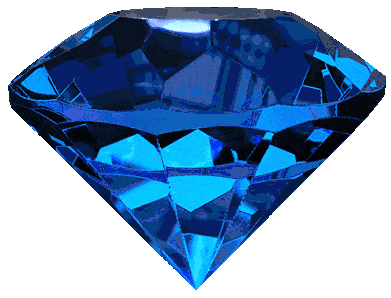-
Goldman Casino Online | Phone, Tablet & Mobile Gambling & Slots Info Treasure Trove
- Introduction
- How to Prepare for a Groove Dance Competition
- What to Expect at a Groove Dance Competition
- Tips for Nailing Your Groove Dance Routine
- The Benefits of Participating in Groove Dance Competitions
- How to Choose the Right Music for Your Groove Dance Routine
- The Different Styles of Groove Dance and How to Master Them
- What You Need to Know About Groove Dance Costumes
- The History of Groove Dance and Its Evolution Over Time
- The Latest Trends in Groove Dance Choreography
- How to Find the Best Instructors for Groove Dance Lessons
- The Benefits of Joining a Groove Dance Team or Troupe
- How to Create an Impressive Solo Performance for a Groove Dance Competition
- What Judges Look For in a Winning Groove Dance Performance
- An Overview of the Different Types of Groove Dance Competition Schedules
- Q&A
- Conclusion
“Groove to the Beat and Show Off Your Moves at Groove Dance Competition!”
Introduction
Welcome to Groove Dance Competition! We are excited to bring you the best in competitive dance. Our competition schedule is designed to provide dancers of all ages and skill levels with an opportunity to showcase their talents and compete for awards. We offer a variety of divisions, including solo, duo/trio, small group, large group, and production. Our competition will feature top-notch judges from around the country who will evaluate each performance and award medals and trophies to the top finishers. We look forward to seeing you on the dance floor!
How to Prepare for a Groove Dance Competition
Competing in a groove dance competition can be an exciting and rewarding experience. However, it is important to prepare properly in order to ensure success. Here are some tips for preparing for a groove dance competition:
1. Practice: The most important part of preparing for a groove dance competition is practice. Make sure to practice your routine regularly and focus on perfecting the details. Pay attention to your technique, timing, and expression.
2. Choose the Right Music: Choosing the right music is essential for a successful groove dance performance. Choose music that fits the style of your routine and that you can move to easily.
3. Know the Rules: Familiarize yourself with the rules of the competition before you compete. This will help you avoid any surprises on the day of the competition and ensure that you are following all of the guidelines.
4. Get Feedback: Ask friends or family members who are familiar with groove dancing to watch your routine and give you feedback. This will help you identify any areas that need improvement before the competition.
5. Stay Positive: It is important to stay positive throughout your preparation process and on the day of the competition. Remember that everyone makes mistakes, so don’t be too hard on yourself if something doesn’t go as planned.
By following these tips, you can ensure that you are well-prepared for a groove dance competition and have an enjoyable experience competing!
What to Expect at a Groove Dance Competition
Competing in a Groove Dance Competition can be an exciting and rewarding experience. Here is what you can expect when attending a Groove Dance Competition:
Registration: Upon arriving at the competition, you will need to register. This will involve providing your name, contact information, and the name of the dance studio you are representing. You may also need to provide proof of age or other documents.
Competition Rules: Before the competition begins, you will be given a set of rules that must be followed. These rules may include restrictions on costumes, music, and choreography. It is important to read and understand these rules before competing.
Judging: During the competition, each routine will be judged by a panel of experts. The judges will evaluate each routine based on criteria such as technique, artistry, and performance quality. The judges’ scores will determine the winners of each category.
Awards Ceremony: After all of the routines have been performed, an awards ceremony will take place. During this ceremony, awards will be presented to the top competitors in each category.
At a Groove Dance Competition, you can expect an exciting and competitive atmosphere. With proper preparation and dedication, you can make your performance stand out from the rest!
Tips for Nailing Your Groove Dance Routine
1. Practice: The key to nailing your groove dance routine is practice. Make sure you practice the routine multiple times before performing it in front of an audience. This will help you become more comfortable with the moves and ensure that you can execute them with confidence.
2. Visualize: Visualization is a great way to prepare for a performance. Before you start practicing, take some time to visualize yourself executing the routine perfectly. This will help you focus on the moves and give you a mental image of what you want to achieve.
3. Break it down: If there are any difficult moves in your routine, break them down into smaller steps and practice each step separately until you have mastered it. This will make it easier for you to put the whole routine together and make sure that all of your moves are executed correctly.
4. Stay focused: When performing your routine, stay focused on the music and the moves. Don’t let yourself get distracted by anything else going on around you or by any mistakes that you may make during the performance.
5. Have fun: Remember that groove dancing is supposed to be fun! Don’t take yourself too seriously and enjoy the experience of performing your routine in front of an audience.
The Benefits of Participating in Groove Dance Competitions
Participating in Groove Dance Competitions can be a great way to improve your dancing skills and gain valuable experience. These competitions provide dancers with an opportunity to showcase their talents and compete against other dancers from around the world. Here are some of the benefits of participating in Groove Dance Competitions:
1. Develop Your Skills: Participating in Groove Dance Competitions gives you the chance to practice and refine your dancing skills. You will be able to learn from experienced dancers and receive feedback on your performance. This will help you become a better dancer and reach your full potential.
2. Networking Opportunities: Groove Dance Competitions provide an excellent opportunity to meet other dancers from around the world. You can make connections with other dancers, learn about different styles of dance, and even find potential mentors or teachers.
3. Gain Valuable Experience: Participating in Groove Dance Competitions will give you valuable experience that can help you pursue a career in dance. You will be able to demonstrate your skills and gain recognition for your hard work and dedication.
4. Have Fun: Most importantly, participating in Groove Dance Competitions is a great way to have fun! You will be able to enjoy the thrill of competition while meeting new people and learning new skills.
Overall, participating in Groove Dance Competitions can be a great way to improve your dancing skills, gain valuable experience, network with other dancers, and have fun!
How to Choose the Right Music for Your Groove Dance Routine
When it comes to creating a groove dance routine, the right music is essential. Music sets the tone and energy of your routine, and can make or break your performance. Here are some tips for choosing the right music for your groove dance routine:
1. Consider Your Audience: Think about who will be watching your routine and what kind of music they might enjoy. If you’re performing for a younger audience, you may want to choose upbeat pop songs or hip-hop tracks. For an older crowd, you may want to opt for classic rock or jazz tunes.
2. Choose Music That Fits Your Style: Select music that fits with your style of dancing. If you’re doing a contemporary routine, choose songs with a modern beat and sound. For a more traditional style, pick songs with a classic feel.
3. Consider Tempo: The tempo of the song should match the speed of your routine. If you’re doing a fast-paced routine, choose faster songs with an energetic beat. For slower routines, pick slower songs with a relaxed tempo.
4. Find Songs With Good Transitions: Look for songs that have good transitions between sections so that you can easily move from one part of your routine to the next without any awkward pauses or breaks in the music.
5. Experiment: Don’t be afraid to experiment with different types of music until you find something that works well for your routine. You may be surprised at how different genres can work together to create an interesting and unique groove dance routine!
The Different Styles of Groove Dance and How to Master Them
Groove dance is a form of street dance that combines elements of hip-hop, jazz, funk, and Latin styles. It is characterized by its smooth, relaxed movements and its focus on improvisation. Groove dance is often performed in a group setting and can be used to express emotion or tell a story.
There are several different styles of groove dance, each with its own unique set of moves and techniques. Here are some of the most popular styles and how to master them:
1. Popping: Popping is a style of groove dance that involves quick, jerky movements. It is often used to create illusions or to emphasize certain beats in the music. To master popping, you need to practice isolating your body parts and learning how to control them independently.
2. Locking: Locking is a style of groove dance that involves locking your body into certain positions for brief periods of time. It is often used to create an illusion of staccato movement or to emphasize certain beats in the music. To master locking, you need to practice isolating your body parts and learning how to control them independently.
3. Breaking: Breaking is a style of groove dance that involves spinning, flipping, and other acrobatic moves. It is often used to create an illusion of speed or power. To master breaking, you need to practice isolating your body parts and learning how to control them independently.
4. House: House is a style of groove dance that involves smooth, flowing movements with an emphasis on footwork. It is often used to create an illusion of grace or elegance. To master house, you need to practice isolating your body parts and learning how to control them independently.
No matter which style of groove dance you choose to learn, mastering it requires dedication and practice. Start by watching videos online or attending classes at a local studio so you can learn the basics before attempting more complex moves on your own. With enough practice and patience, you’ll be able to master any style of groove dance!
What You Need to Know About Groove Dance Costumes
Groove dance costumes are an important part of any dancer’s wardrobe. They can help to enhance the performance and create a unique look for each dancer. When selecting a costume, it is important to consider the style, fit, and cost.
Style: Groove dance costumes come in a variety of styles, from classic to modern. The style should be chosen based on the type of dance being performed and the dancer’s individual taste. It is important to select a costume that is comfortable and allows for freedom of movement.
Fit: Groove dance costumes should fit properly in order to ensure that the dancer can move freely and comfortably. It is important to measure the dancer’s body before purchasing a costume in order to ensure that it fits correctly.
Cost: Groove dance costumes can range in price depending on the quality of materials used and the complexity of the design. It is important to consider the budget when selecting a costume in order to ensure that it fits within the desired price range.
Overall, groove dance costumes are an essential part of any dancer’s wardrobe. It is important to consider style, fit, and cost when selecting a costume in order to ensure that it meets all of the dancer’s needs. With careful consideration, dancers can find a costume that will help them look their best while performing their best on stage.
The History of Groove Dance and Its Evolution Over Time
Groove dance is a style of dance that has been around for centuries. It is a form of street dance that has evolved over time and is now seen in many different forms. Groove dance is characterized by its improvisational nature, as well as its focus on body isolations and intricate footwork.
The origins of groove dance can be traced back to the African continent. It was originally used as a form of communication between tribes, with each tribe having its own unique style and movements. As the African diaspora spread throughout the world, so did groove dance, taking on different forms in different countries.
In the United States, groove dance began to take shape in the early 1900s. It was popularized by jazz musicians such as Cab Calloway and Duke Ellington, who incorporated it into their performances. This style of dance was also seen in the Lindy Hop, which was popularized by African American dancers in Harlem during the 1920s and 1930s.
As time went on, groove dance began to evolve and take on new forms. In the 1970s, funk music became popular and this style of dance was adapted to fit this new sound. This style of groove dance was known as “funking” and it focused more on body isolations and intricate footwork than its predecessors.
In the 1980s, hip-hop culture began to emerge and this style of groove dance was adapted to fit this new sound as well. This style of groove dance was known as “popping” or “locking” and it focused more on quick movements and isolations than its predecessors. This style of groove dance has since become one of the most popular styles of street dancing today.
Today, groove dance continues to evolve with new styles being created all the time. From popping and locking to krumping and waacking, there are now countless variations of this style of street dancing that can be seen all over the world. No matter what form it takes, groove dance will always remain an important part of street culture and will continue to evolve over time.
The Latest Trends in Groove Dance Choreography
Groove dance choreography is an ever-evolving art form that continues to captivate audiences around the world. As the popularity of groove dance continues to grow, so too do the trends in choreography. Here are some of the latest trends in groove dance choreography:
1. Fusion Choreography: This trend combines elements from different dance styles, such as hip-hop, jazz, and contemporary, to create unique and exciting routines. This type of choreography allows dancers to express themselves in a variety of ways and can be used to tell stories or convey emotions.
2. Storytelling Choreography: This trend focuses on telling a story through movement. Dancers use their bodies to portray characters and act out scenes that have been carefully crafted by the choreographer. This type of choreography is often used in musical theater productions and can be used to explore themes such as love, loss, and hope.
3. Visual Effects Choreography: This trend uses props, lighting, and other visual effects to enhance the performance. Visual effects can be used to create illusions or add an extra layer of excitement to a routine.
4. Group Choreography: Group choreography is becoming increasingly popular as it allows dancers to work together as a team and create something bigger than themselves. Group routines often involve intricate formations and synchronized movements that require precision and teamwork.
No matter what type of groove dance choreography you’re interested in exploring, these trends are sure to keep you inspired!
How to Find the Best Instructors for Groove Dance Lessons
Finding the best instructors for Groove dance lessons can be a daunting task. However, with the right research and preparation, you can find the perfect instructor to help you reach your goals. Here are some tips to help you find the best instructors for Groove dance lessons:
1. Research Instructors: Before committing to any instructor, it is important to do your research. Look for reviews online and ask around for recommendations from friends or family who have taken Groove dance lessons. This will give you an idea of the instructor’s teaching style and level of expertise.
2. Ask Questions: Once you have narrowed down your list of potential instructors, contact them and ask questions about their experience and qualifications. Make sure they are certified in Groove dance instruction and that they have a good understanding of the style and technique.
3. Observe Classes: If possible, observe a class taught by each instructor before making your decision. This will give you an opportunity to see how they interact with students and how they teach the material.
4. Set Goals: Before beginning lessons, make sure to discuss your goals with the instructor so that they can tailor their instruction to meet your needs. This will ensure that you get the most out of your lessons and progress quickly towards achieving your goals.
By following these tips, you can find the best instructors for Groove dance lessons and get on track towards becoming a better dancer!
The Benefits of Joining a Groove Dance Team or Troupe
Joining a groove dance team or troupe can be a great way to express yourself, stay active, and make friends. Groove dance teams and troupes are often made up of dancers of all ages and skill levels, so no matter your experience level, you can find a place to fit in. Here are some of the benefits of joining a groove dance team or troupe:
1. Improve Your Dance Skills: Joining a groove dance team or troupe is an excellent way to improve your dancing skills. You will have access to experienced instructors who can help you refine your technique and learn new moves. You will also have the opportunity to practice with other dancers and receive feedback from them.
2. Make Friends: Joining a groove dance team or troupe is also a great way to make friends. You will be surrounded by people who share your passion for dancing and you will have the chance to bond with them over shared experiences.
3. Express Yourself: Groove dance teams and troupes provide an outlet for self-expression. You can use the art of dance to express yourself in ways that words cannot. This can be especially beneficial if you are feeling overwhelmed or stressed out by life’s challenges.
4. Stay Active: Groove dancing is an excellent form of exercise that can help you stay active and healthy. It is also a great way to relieve stress and have fun at the same time!
Overall, joining a groove dance team or troupe can be an incredibly rewarding experience that offers many benefits. Whether you are looking to improve your dancing skills, make friends, express yourself, or stay active, joining a groove dance team or troupe is sure to provide you with all of these things and more!
How to Create an Impressive Solo Performance for a Groove Dance Competition
Creating an impressive solo performance for a groove dance competition requires careful planning and preparation. Here are some tips to help you create a memorable performance that will stand out from the crowd.
1. Choose the Right Music: Selecting the right music is essential for creating an effective solo performance. Consider the tempo, rhythm, and style of the music to ensure it fits with your choreography. It’s also important to choose music that resonates with you and reflects your personality.
2. Develop Your Choreography: Once you’ve chosen your music, it’s time to create your choreography. Start by breaking down the song into sections and then create movements that fit with each section. Make sure to include a variety of moves, such as turns, jumps, and isolations, to keep your audience engaged.
3. Practice: Rehearsing is key to creating a successful solo performance. Practice your routine until it becomes second nature so you can focus on performing rather than worrying about remembering the steps.
4. Add Your Own Flair: Once you’ve perfected your routine, add your own flair to make it unique and memorable. This could include adding improvisation or personalizing certain moves to reflect your style and personality.
5. Perform with Confidence: Finally, when it comes time to perform, be confident in yourself and your abilities. Remember that you have worked hard to prepare for this moment and trust that you will do well!
By following these tips, you can create an impressive solo performance for a groove dance competition that will wow the judges and audience alike!
What Judges Look For in a Winning Groove Dance Performance
Judges look for a variety of elements when evaluating a winning Groove Dance performance. First, they look for technical proficiency in the dancer’s execution of the choreography. This includes the dancer’s ability to perform the steps with precision and accuracy, as well as their ability to transition between steps smoothly. Judges also look for creativity and originality in the dancer’s interpretation of the choreography. They want to see that the dancer has put their own spin on the routine and has added their own flair to it.
In addition, judges look for a strong performance quality from the dancer. This includes their ability to convey emotion through their movements, as well as their ability to connect with the audience and draw them into the performance. Judges also look for an overall sense of unity between the dancer and their partner, if applicable. They want to see that both dancers are in sync with each other and that they are working together to create a cohesive performance.
Finally, judges look for a high level of energy from the dancer throughout their performance. They want to see that the dancer is giving it their all and is fully committed to delivering an entertaining and engaging routine.
An Overview of the Different Types of Groove Dance Competition Schedules
Groove dance competitions are a great way for dancers to showcase their skills and compete against other dancers. There are several different types of competition schedules that can be used to organize a groove dance competition. Each type of schedule has its own advantages and disadvantages, so it is important to understand the different types of schedules before deciding which one is best for your event.
The most common type of groove dance competition schedule is the single elimination format. In this format, all competitors are placed into a single bracket and compete against each other until only one dancer remains. This type of schedule is ideal for smaller competitions as it allows for quick elimination rounds and a fast-paced competition. However, it can be difficult to keep track of who has been eliminated and who is still in the competition.
Another popular type of groove dance competition schedule is the double elimination format. In this format, all competitors are placed into two brackets and compete against each other until only one dancer remains in each bracket. This type of schedule allows for more rounds of competition and gives dancers more opportunities to showcase their skills. However, it can be difficult to keep track of who has been eliminated from each bracket and who is still in the competition.
The round robin format is another type of groove dance competition schedule that can be used. In this format, all competitors are placed into groups and compete against each other within their group until only one dancer remains in each group. This type of schedule allows for more rounds of competition and gives dancers more opportunities to showcase their skills. However, it can be difficult to keep track of who has been eliminated from each group and who is still in the competition.
Finally, the freestyle format is another type of groove dance competition schedule that can be used. In this format, all competitors are given a set amount of time to perform their routine without any restrictions or rules. This type of schedule allows for more creativity and freedom for dancers to showcase their skills in unique ways. However, it can be difficult to judge which dancer performed the best routine since there are no set criteria or rules for judging performances.
No matter which type of groove dance competition schedule you choose, it is important to make sure that all competitors have an equal chance at success by providing them with clear instructions on how the competition will run and what they need to do in order to win. By understanding the different types of schedules available, you can ensure that your event runs smoothly and that all competitors have an enjoyable experience competing against each other.
Q&A
Q: What is the competition schedule for Groove Dance?
A: The competition schedule for Groove Dance varies depending on the event. Generally, competitions will include a warm-up period, followed by a series of rounds in which dancers compete against each other. The rounds may include solos, duets, trios, and group performances. Depending on the event, there may also be a final round or showcase.
Conclusion
The Groove Dance Competition Schedule is an excellent way to keep track of upcoming dance competitions and to stay organized. It provides a comprehensive list of events, including dates, locations, and registration information. With this schedule, dancers can easily plan their competition season and make sure they are prepared for each event. The Groove Dance Competition Schedule is an invaluable resource for any dancer looking to stay on top of their game.











